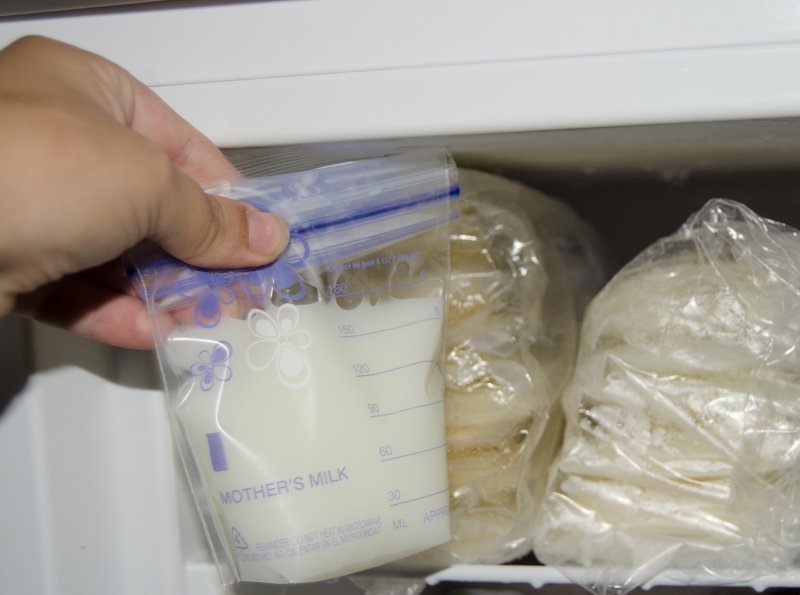A breastmilk freezer stash serves an obvious purpose if you’re planning to return to work soon. However, a stash can be useful for any mom, including stay-at-home moms. Why? A freezer stash provides you with freedom if you want a night out on the town or if an unexpected emergency calls you away from your little one. It’s also a fail-safe if you have any other unanticipated breastfeeding interruption. If you’re using pumping to boost your milk supply, a freezer stash makes the best use of those extra pumping sessions. Some super-producers even donate a portion of their stash to moms who are unable to produce breastmilk.
When is the best time to begin building a freezer stash?
Like most things related to your baby and your body, the best time to begin building a freezer stash depends on how you feel. In general, it’s wise to wait until you’ve got the hang of breastfeeding and you’ve had time for bonding with your newborn. Trying to do too many new things at once, especially while you’re still physically and emotionally recovering from pregnancy and labor, can be defeating. Use your first several weeks to enjoy your baby and allow your body to rest and recuperate. Then, when you’re ready, integrate pumping into your routine.
If you know pumping at work will be difficult, consider starting about three weeks before you return to the job site to make sure you’ve got an ample supply. However, even in a restrictive work environment, moms are able to do more OTJ pumping with portable, wearable breast pumps like the Elvie Stride. That means you don’t have to have quite as much in storage as you can continue building the supply by pumping at work.
How much breastmilk should I store in my freezer?
Generally speaking, babies between two and five months consume between four and six ounces at each feeding, and they nurse every three to four hours, according to the American Academy of Pediatrics (AAP). Older babies may drink as much as eight ounces per session with fewer sessions altogether. Let’s imagine a two month old who drinks six ounces every four hours. For that thirsty baby, you’d need to have at least 12 ounces in storage to cover a single 8-hour workday.
However, as we mentioned above, this may vary by baby. There’s only one sure way to get a clear picture of how much your baby will require each day while you’re at work. Track their consumption first. You can try using a breastfeeding app to easily track feedings. We’ve reviewed a few Android and iPhone apps recently that you may want to consider. Some smart pumps, like the Stride, connect with an app that automatically tracks feedings, further simplifying the process. If you’re not sure whether your pump of choice comes with an app, ask us, and we’ll verify.
What are the best freezer containers for breastmilk storage?
Plenty of options for breastmilk storage exist, but we recommend breastmilk storage bags. They take up less room in the freezer, allowing you to build your supply without sacrificing valuable ice cream space. Be sure to choose bags designated for breastmilk storage as they are more durable and BPA-free.
How long will breastmilk last in the freezer?
As a rule, the fresher the milk, the more nutrients it contains. In addition, more recent milk contains antibodies for potential bugs floating around out there, so it’s good to use milk within a few weeks when possible. However, freshly expressed breastmilk can be stored in the back of the freezer for up to a year. Label breastmilk containers with the date the milk was expressed (and your child’s name if the bags will be stored at a childcare facility) and use the oldest milk first to get the most nutritional value out of each bag.
How do I thaw breastmilk?
You can either move the frozen container to the refrigerator on the evening before you plan to use it, or you can warm it up gently in a bowl of warm water or by running it under warm water from the faucet. Research suggests that rapid heating of breastmilk can impact its antibodies, so avoid microwaving it.
Need more information on integrating pumping into your breastfeeding schedule?
We’ve covered that in a recent blog post, so check it out! If you still have questions, give us a call. We’re all moms and breast pump pros at Milk N Mamas Baby, and we’re happy to help.
